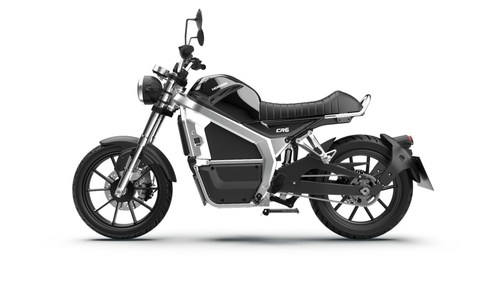Vehicle will be a pioneer in using a battery with Niobium. The model will be presented in the first half of the year, and is expected to hit the market in 2024
SÃO PAULO, April 4, 2022 /PRNewswire/ — Aiming to expand access to clean energy and contribute to the popularization of electromobility in the country, Horwin Brasil, an electric motorcycle company, has partnered with the Brazilian CBMM, the world’s leading specialist in Niobium technologies. The objective of the agreement is to apply a lithium-ion battery with Niobium in electric two-wheel vehicles.

“The partnership with Horwin Brasil is important, as it accelerates the application of ultra-fast recharge batteries with Niobium in motorcycles as well”, says Rogério Marques Ribas, manager of the CBMM Battery Program.
According to Horwin Brasil’s CEO, Pricilla Favero, this project prototype will be presented in the first half of 2022. Horwin’s CR6 model motorcycle will be used, which has 6,200W of engine power and up to 150 km of autonomy. “With CBMM’s expertise and pioneering spirit, added to our highly skilled team in developing new solutions, the expectation is that the motorcycle with a Niobium battery will be available in the Brazilian market as early as 2024.
“We work so that, soon, anyone will be able to use an electric motorcycle with ultra-fast charge of up to ten minutes. In addition to this recharge differential, Niobium batteries bring significant benefits in terms of safety and battery life, as they allow up to 20,000 charges under a relatively wide range, which alone is the greatest advance for this sector in recent times”, complements Pricilla.
Ribas adds that the technology to be used in the electric motorcycle’s battery is the result of more than three years of research and development by collaborating CBMM and Japanese company Toshiba Corporation.
The CBMM manager explains that “the use of Niobium oxide in the anode of lithium-ion batteries provides special features for this component. Being a very stable element, it allows safer and more efficient operations. Furthermore, due to its more open crystal structure, which facilitates lithium intercalation, it allows a full recharge in less than ten minutes, without damaging the battery”. He adds that, due to these unique characteristics, batteries with Niobium are safer and have a much longer useful life than traditional batteries.”
Toshiba Corporation explains that “Toshiba has been focusing our attention on the possibility of Niobium Titanium Oxide (NTO) as a next-generation anode material that will help increase the battery capacity while maintaining the excellent characteristics of lithium titanium oxide (LTO), the conventional anode material of SCiB™. NTO has roughly three times higher theoretical volume capacity density than LTO while providing the advantages of LTO such as long life and rapid charging.”INNOVATION
Ribas reinforces that “CBMM already works with several companies in the automotive industry, whether in vehicular structures or in developing Niobium applications for electric mobility”. An example is the partnership with Volkswagen Caminhões e Ônibus – VWCO. Announced in 2021, it provides for the application of Niobium batteries in large electric vehicles, which will begin to be tested in 2023, at the VWCO factory, in the city of Resende, state of Rio de Janeiro, and later at CBMM’s industrial plant in Araxá, in the state of Minas Gerais, both in Brazil.